Match the species in Column I with the type of hybrid orbitals in Column II.
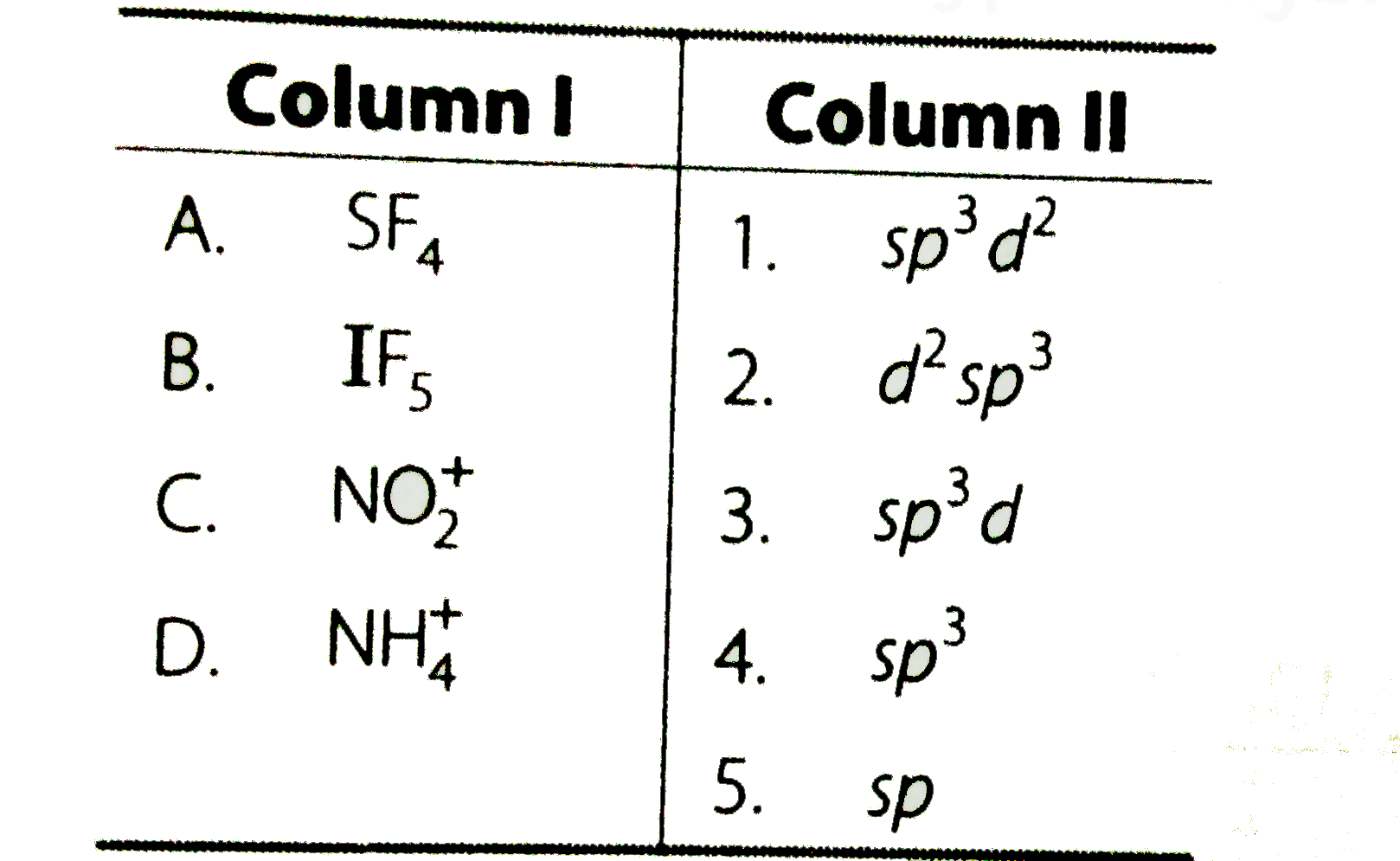
(A-3), (B-1), (C-5), (D-4)
A. SF4 = number of bp(4) + number of Ip(1)
=sp3d hybridisation.
B) IF5= number of bp(5) + number of Ip(1)
=sp3d2 hybridisation.
C) NO+2 number of bp (2) + number of Ip(0)
=sp hybridisation.
D) NH+4 = number of bp(4) + number of Ip(0)
=sp3 hybridisation.
Topper's Solved these Questions
- CHEMICAL BONDING AND MOLECULAR STRUCTUREBook:NCERT EXEMPLAR ENGLISHChapter:CHEMICAL BONDING AND MOLECULAR STRUCTUREExercise:Assertions and Reasons
Explore 3 Videos
- CHEMICAL BONDING AND MOLECULAR STRUCTUREBook:NCERT EXEMPLAR ENGLISHChapter:CHEMICAL BONDING AND MOLECULAR STRUCTUREExercise:Long Answer type questions
Explore 9 Videos
- CHEMICAL BONDING AND MOLECULAR STRUCTUREBook:NCERT EXEMPLAR ENGLISHChapter:CHEMICAL BONDING AND MOLECULAR STRUCTUREExercise:Short answer types questions
Explore 21 Videos
- CLASSIFICATION OF ELEMENTS AND PERIODICITY IN PROPERTIES.Book:NCERT EXEMPLAR ENGLISHChapter:CLASSIFICATION OF ELEMENTS AND PERIODICITY IN PROPERTIES.Exercise:Long answer types question
Explore 7 Videos
Similar Questions
Match the shape of molecules in Column I with the type of hybridisation in Column II.
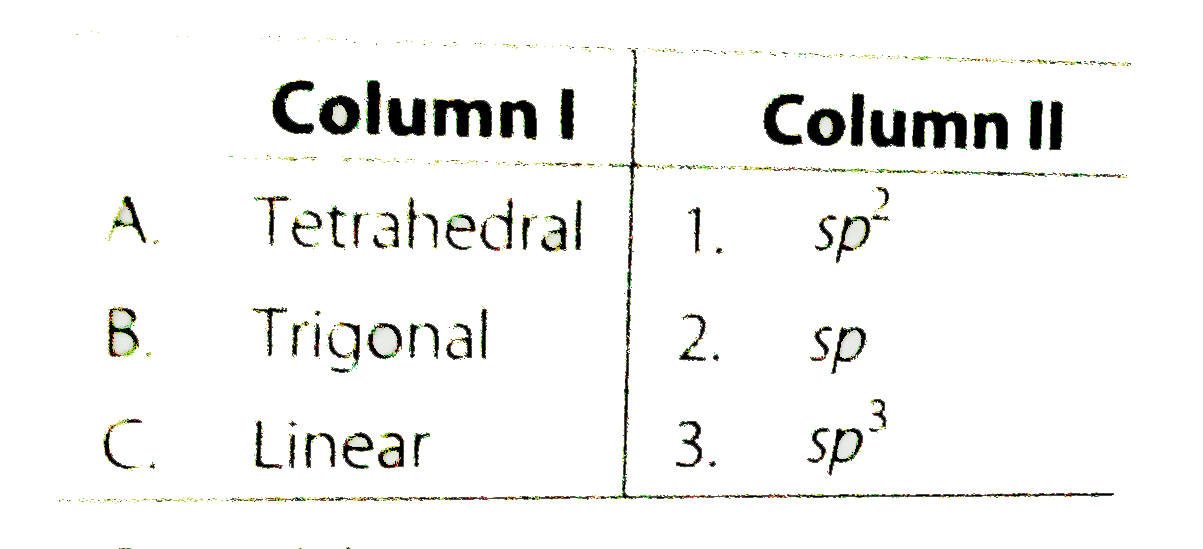
View SolutionMatch the species in Column I with the bond order in Column II.
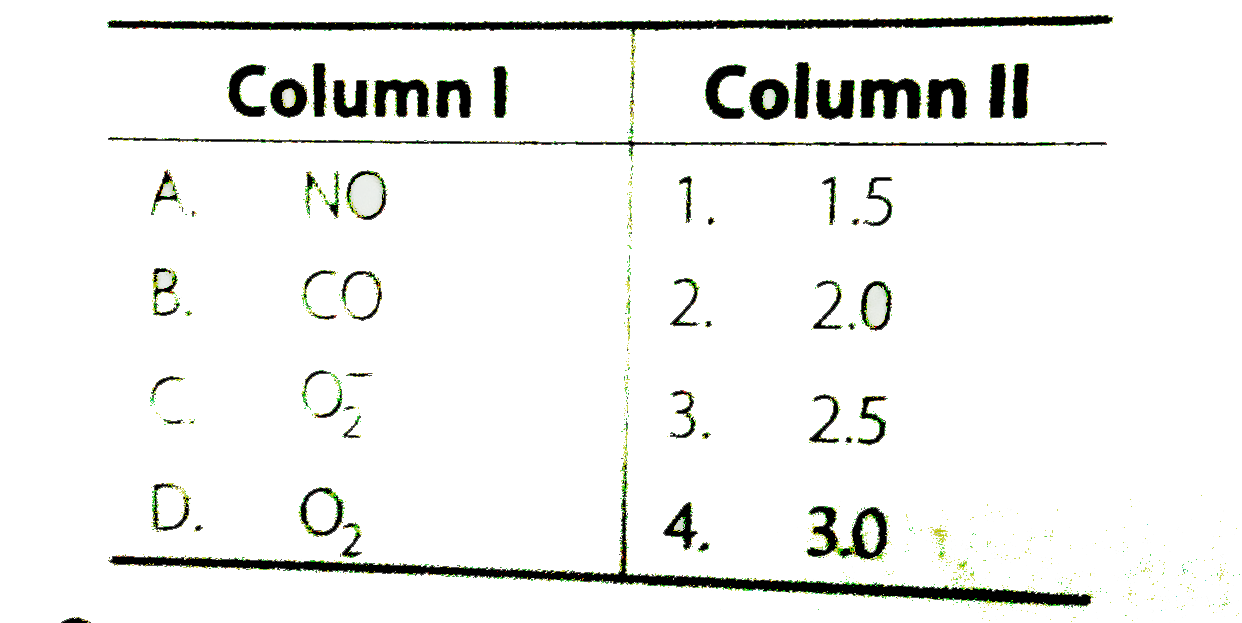
View SolutionMatch the species in Column I with the geometry/shape in Column II.

View SolutionMatch the reactions given in Column I with the type of reactions given in Column II
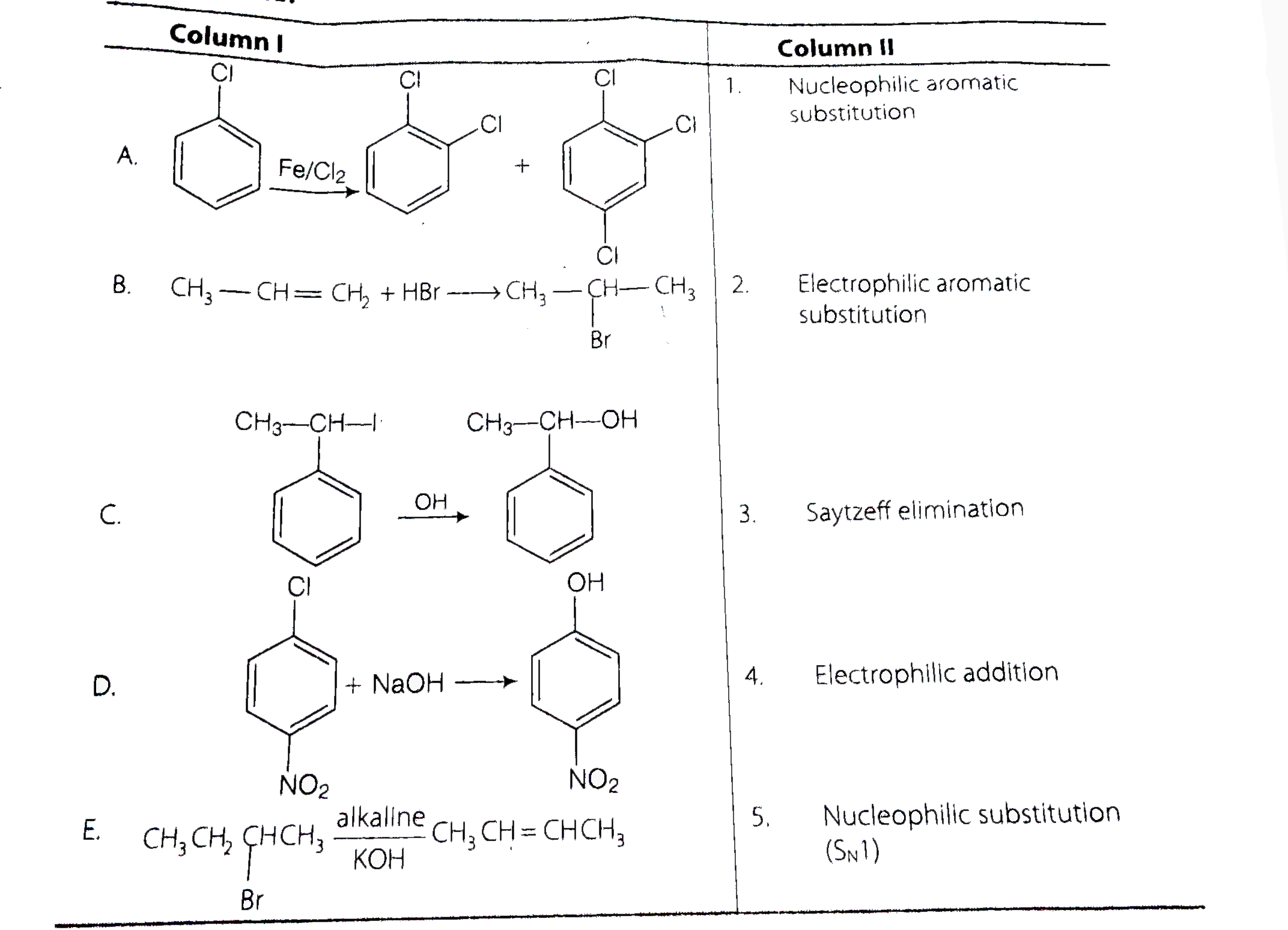
View SolutionMatch the reactions given in Column I with the reaction types in Column II.

View SolutionMatch structures given in Column I with the type of detergents given in Column II.
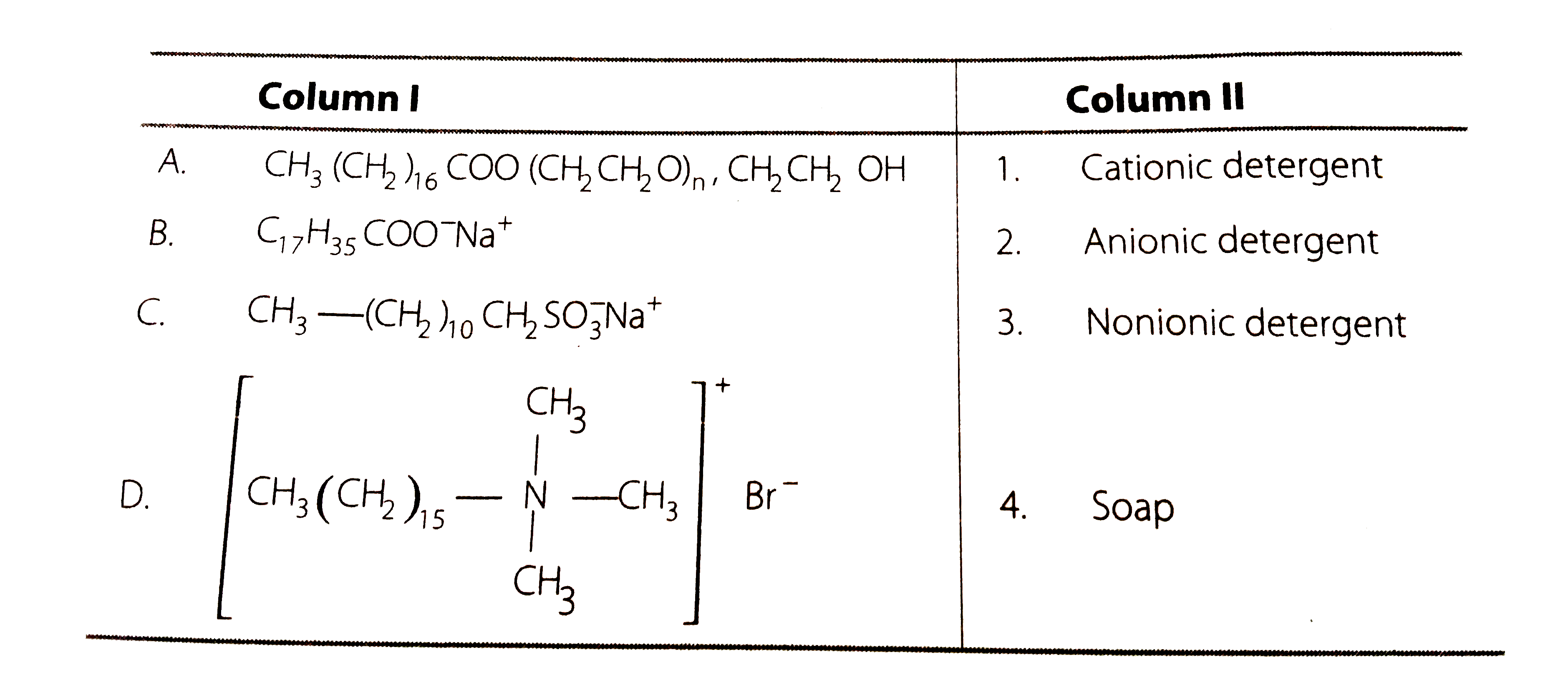
View SolutionMatch the column I with Column II:-

View SolutionMatch the column I with column II :

View SolutionMatch the type of packing given in column I with the iterms given in column II.
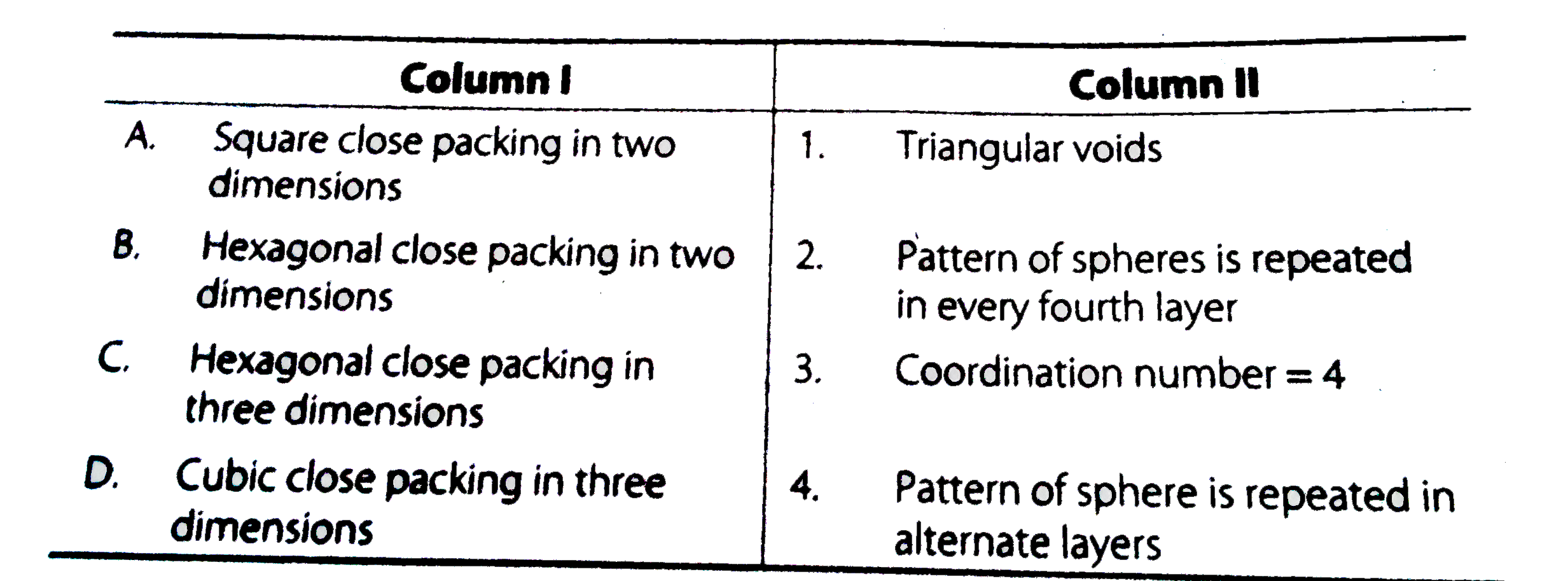
View SolutionMatch the type of packing given in column I with the iterms given in column II.

View Solution
